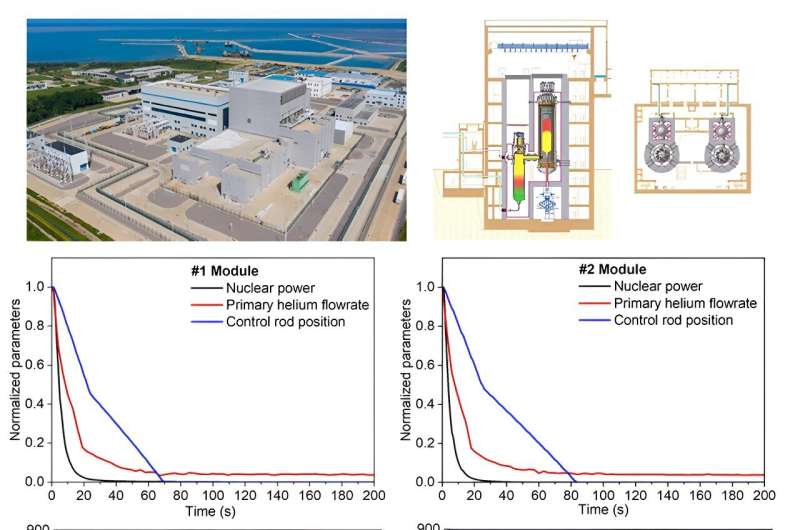A team of engineers from Tsinghua University, working at China's high-temperature reactor with a pebble-bed module (HTR-PM), claims that the reactor has passed a critical cooling test. In their study, published in Joule, the group turned off external power to the reactor to test its cooling abilities over two days.
One of the major drawbacks of using nuclear energy to generate electricity is the fear of a meltdown, possibly exposing populations to radiation. Scientists have been working to develop designs for nuclear reactors that do not melt down if their coolant supply is interrupted. In this new study, the team in China tested the HTR-PM design, in which the fuel rods used in reactions are less dense than those currently used.
They employ more graphite and less uranium, and the uranium is encased. The design results in slower reactions and the ability to sustain higher temperatures for longer periods of time. It also disperses heat over a larger area, which means cooling can be done passively, using either convection, conduction or both. That means that no external power source is needed for cooling.
The design would have prevented the meltdown that occurred at the Fukushima Daiichi plant in Japan in 2011. In that accident, a tsunami caused a power outage that made it impossible to pump the water used to keep the reactors cool, which allowed them to overheat.
The new nuclear plant in China has been under construction and testing since 2016—it has two reactors, each capable of generating 105 MW of power. It began operations last year. The research team sought to prove that the plant is incapable of melting down by revving both reactors up to full power and then turning off all external power—this immediately stopped water flowing to and from the turbines that are used to generate power.
The researchers then monitored the plant in case of a meltdown, which did not occur; instead, stable temperatures were reached within 36 hours.




Recommended Comments
There are no comments to display.
Join the conversation
You can post now and register later. If you have an account, sign in now to post with your account.
Note: Your post will require moderator approval before it will be visible.